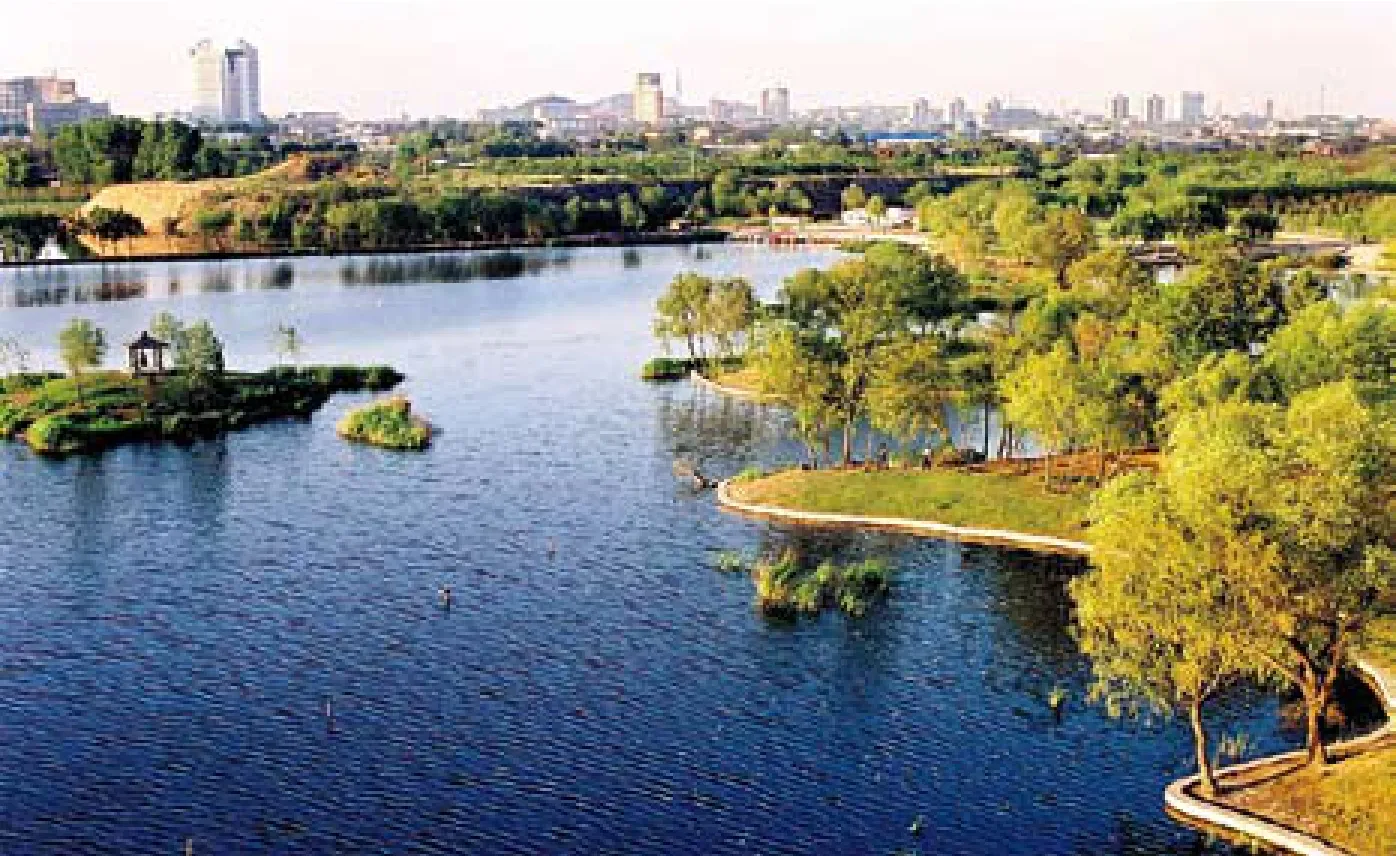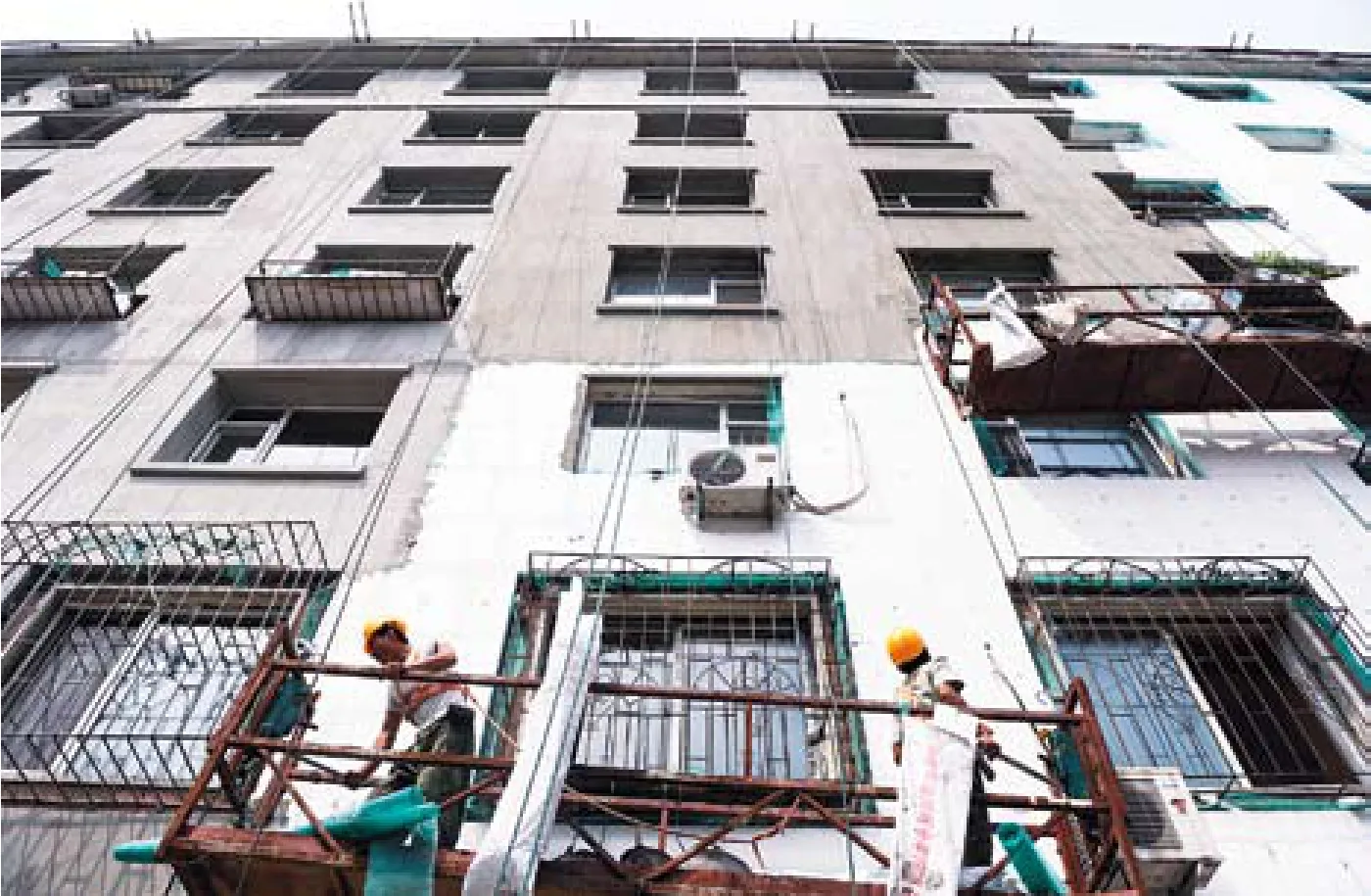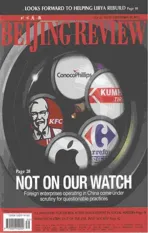Making Cities Better
2011-10-14ByWANGHAIRONG
By WANG HAIRONG
Making Cities Better
By WANG HAIRONG
Livelihood programs change the lives of urban residents
For decades Chinese cities have vied with each other to top national and international development rankings.However, the triennial national list of cities with an advanced living environment judges candidates according to less conventional criteria. Cities across the country are evaluated not for their GDP, skylines or historical attractions, but for their cleanliness,government ef fi ciency, public order and the courtesy of their citizens.
The first version of the list, which included nine cities and three districts, was published in October 2005 by the Publicity Department of the Central Committee of the Communist Party of China in order to uplift urban environments across China. The second batch of 11 cities and three districts was certi fi ed in January 2009.
The third version of the list is due later this year.
Previously, an eligible city was required to have a per-capita GDP higher than the national average for two consecutive years before the application date. In 2011, this requirement was waived as a result of the government’s determination to downplay the importance of GDP in the evaluation of local governments’ performance.
In addition to application materials sent in by city authorities, a city’s performance is evaluated by the use of official statistics,questionnaires and site visits. During site visits,evaluators may dial the city’s service hotlines to see whether they work, review work logs and observe the work of city authorities.
“Our purpose is not only to make the list.More importantly, in the process, we are aiming to improve people’s lives and boost the city’s image,” said Gao Guangbin, Secretary of the Committee of the Communist Party of China of Changchun, capital of northeastern Jilin Province.
Warm house project
The local government in Changchun has been renovating the city’s buildings to make winter more comfortable for its residents.
西部作为欠发达地区,经济社会发展水平整体落后于中东部地区,医疗技术水平也不例外。遵义医学院附属医院(以下简称“遵医附院”)院长余昌胤认为,制约西部地区医疗技术发展主要有以下四方面原因。
With an average temperature of minus 11 degrees centigrade, winter in Changchun is harsh and heating is indispensable.
Although the city does provide central heating, many buildings are not energy effi cient so a lot of heat is lost. In past years,indoor-temperatures in many residents’homes did not reach an adequate level.
“Buildings constructed before 2005 that do not meet the current winter heating standard account for about half of Changchun’s total residential area,” said Xie Zhimin, a municipal government of fi cial.
In 2010, the city started the Warm House Project as part of its efforts to improve people’s livelihood.
“In 2010, the city already put a coat of insulating benzene plates onto 1,000 buildings and installed heat meters in them,” said Xie.
As a result of this renovation many residents felt more comfortable during last year’s cold winter.
Zhang Pingbin, a resident in Nanguan District, lives in a house facing north, which does not have sunshine all year round. “The Warm House Project has changed my life.My house is not only energy ef fi cient but also more sound proof,” Zhang said.
“That is to say, at least 80,000 tons of coal was saved in Changchun in 2010, which is equivalent to reducing 210,000 tons of carbon dioxide emissions and 1,800 tons of sulfur dioxide emissions,” Xie said.
This year, the city plans to renovate 2,100 buildings and a citizen inspector has been assigned to each building under renovation to ensure project quality.
City management reform
A “city management reform” is sweeping Wuhan in central Hubei Province. The reform is intended to make people’s lives better and the city more attractive.
“Wuhan’s environment will change considerably in three months, radically in one year, and in three years, it will be the best in the province and fi rst-rate in the country,” said Wuhan Mayor Tang Liangzhi on July 11.
As part of the campaign, 150,000 volunteers have been deployed across the city.Wearing red caps and sometimes holding small red fl ags, these volunteers patrol streets and alleys, preventing people from spitting on streets, jumping lines or littering.
The effects of the efforts are already evident in the Fazhan Neighborhood.
The old neighborhood with more than 2,000 households was notorious for being dirty and chaotic. Many senior residents in the area, too frugal to trash outdated furniture and even empty plastic bottles, piled them up along the stairways and on streets. Some residents even threw their waste out of the window. As a result, cigarette butts, plastic bags and egg shells littered the streets.

BLACK TO GREEN: A coal mining subsidence area in Tangshan, Hebei Province,has been turned into a large park

HOUSE WARMING: Workers in Changchun, Jilin Province, coat a residential building with insulation layers on July 11
Social workers have made frequent visits to the district, advocating proper methods of waste deposal and helping local residents clean their neighborhood.
“Now that the streets and stairways are clean, residents are able to take pride in their neighborhood and are willing to make an effort to keep them clean,” said Chen Hanzhong, an of fi cial of Qiaokou District that administers Fazhan Neighborhood.
Public service upgrading
Tangshan in north China’s Hebei Province is best known for the catastrophic earthquake in 1976 that almost entirely destroyed the city and killed more than 240,000 people. More than 30 years on, however, the city is seeking to establish itself as one of the best places to live in China.
The municipal government of Tangshan has worked unremittingly to improve its citizens’ quality of life. The city’s quest to earn a spot on the national list of cities with an advanced living environment started on February 4, 2009, with the announcement of a three-year plan to achieve the goal.
In 2009, the municipal government carried out a reform to improve its ef fi ciency and implemented a new accountability system. Under the new system, the fi rst civil servant to receive a request from a resident has the responsibility to respond. If the request falls in his or her lines of duty, he or she should handle the request as soon as possible; if not, he or she should guide the resident to the relevant of fi ces.
The municipal government has also sped up its administrative approval process, and begun to make some services available on holidays. Municipal leaders in the city have made their e-mail addresses public and the city opened 22 hotlines for such services as heating, gas and drinking water supplies and tourism service.
Since 2009, the local government has launched a number of projects to improve the city’s medical system, traf fi c conditions, cultural and sports facilities and the ecological environment.
The municipal government has also solicited public opinion on how to improve Tangshan’s living environment. Since 2006,every December has been designated the“Month of Public Consultation” in the city.According toTangshan Labor Daily, so far,the municipal government has received more than 100,000 pieces of advice. Since May 2011, municipal leaders and more than 6,000 civil servants in the city have visited more than half a million households to inform them of the living environment improvement initiatives and listen to their opinions.
Tangshan used to be a dirty coal mining city but the city has changed its economic structure and become less dependant on resources and energy production. Air quality has improved and areas damaged by mining have been turned into parks.
As part of an effort to gauge the success of its initiatives, the municipal government has commissioned a series of resident satisfaction surveys, with the latest survey indicating 98 percent of Tangshan residents were satis fi ed with the improvements being made to their city.
Safer city life
The desire to make the national list of cities with an advanced living environment has not only spurred cities to improve their municipal facilities but has encouraged authorities to take an interest in the moral conduct of their citizens.
In Changzhou in east China’s Jiangsu Province, a special team has been employed to patrol Internet cafés to monitor the Webbrowsing habits of young people and prevent them from downloading pornography and illegal games. Law enforcement teams have also been sent to inspect book vendors operating near schools and university campuses.
The city also stepped up its crackdown on counterfeit products. Since 2010, 52 manufacturers of counterfeit goods have been shut down. The city has also opened a product quality complaints hotline. The municipal quality watchdog is responsible for handling such complaints.
In the past three years, Changzhou has carried out nearly 100 special anti-crime operations. A number of security cameras have been installed to improve security within the city and the number of violent crimes in the city has dropped over the past three years.
Changzhou Evening Newssaid this is a clear demonstration that the making and publication of the national list of cities with advanced living environment is making a real difference to the lives of local dwellers.
Cities With an Advanced Living Environment
The National List of Cities With an Advanced Living Environment was first published in 2005 by the Publicity Department of the Communist Party of China’s Central Committee to evaluate cities nationwide by certain standards including clean environment, efficient government, sound social development,safe public order and etc. It is the highest honorary title for cites in China,reflecting the comprehensive conditions and development level.
The list is released every three years. The first batch of nine recognized cities and three urban districts was announced in October 2005, with the second list following in January 2009. After making the list public, the panel of judges continued verifying the awarded cities to decide whether they can keep their honorary titles in following years. The evaluation process includes six main steps: application, review, questionnaire survey, online survey,investigation, and overall assessment.
During the evaluation process, the scheme focuses not only on economic growth and GDP, but also on people’s livelihoods and the overall progress of society. Moreover, the social and cultural environment can actually reflect the living standard of cities.
(Source:www.wenming.cn)
